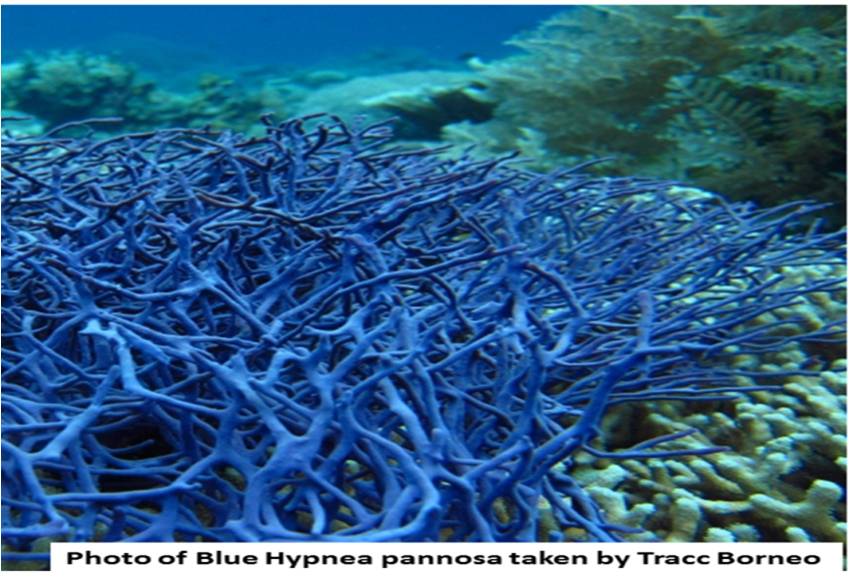
Macro Algae – Ever Wanted a Planted Saltwater Aquarium ?
Have you ever wanted a planted salt water tank? For the most part, that is not possible as there really are no truly salt water plants as there are for fresh water planted tanks. But we can keep many different types of macro algae that will grow into plant like structures adding a variety of colors and looks to your tank. You can develop your tank into a complete marine ecosystem with macro algae, and it is an inexpensive way to design a great looking tank. The below pics are a few examples:
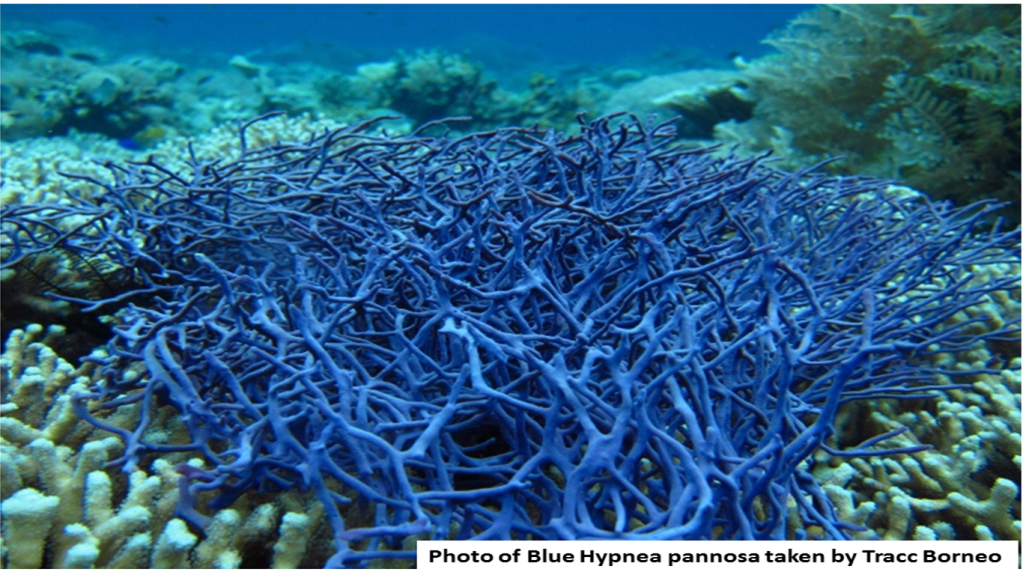
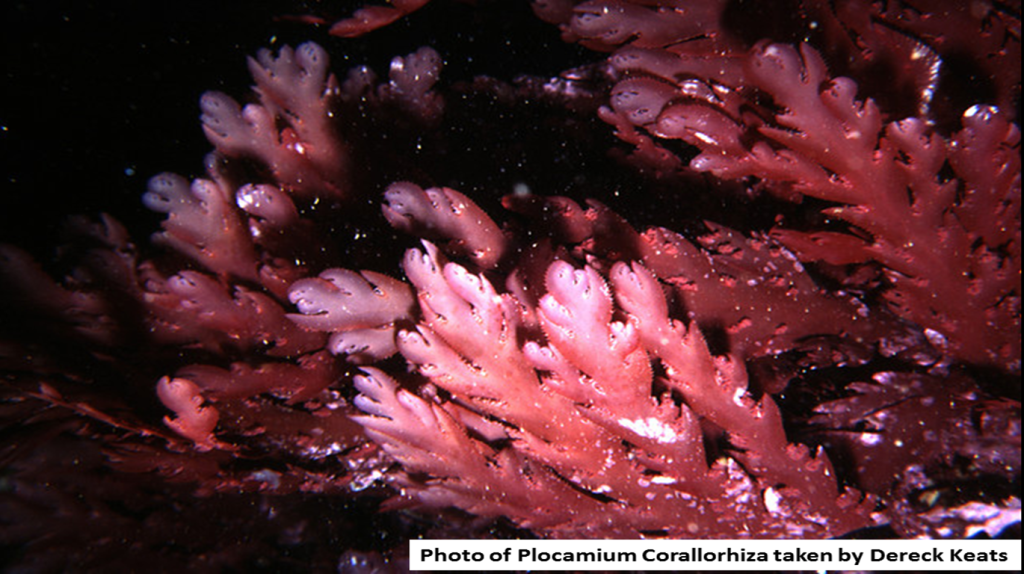
Macro algaes are divided among three large groups based on their coloring (green, brown and red)
- Green Algae (Chlorophyta): They contain chlorophyll and are well represented in the tropics. Some of these algaes are better at dealing with changing or less than ideal water conditions and environments where nutrients are high. Others can be calcified as well. The green algaes are typically better for nutrient removal as they are among the faster growing algae types.
- Brown Algae (Phaeophyta): These are predominantly colored brown but may range in color from beige to almost black while some can look almost red. Lighting condition will affect the colors displayed. One of the most common examples is Sargassum and Turbinaria which are often associated with reef flats
- Red Algae (Rhodophyta): This is the largest group of macro algae but seem to be the least understood. They contain large quantities of the pigment phycoerythrin, which can often resemble the pigmentation of brown algae (fucoxanthin). Red algaes are extremely important reef-building organisms, which may form reef crests and large calcareous plates. There can also be a wide range of color variation due to the lighting condition
Preferred Conditions:
Below you will find some of the most common conditions for a macro tank and systems that use macro algae as refugium. These are general guidelines which might have to be modified for some certain macro algae types. However, do not forget that the vast majority of macro algaes are very hardy and very resilient.
- Salinity: Some macro algaes are very tolerant to salinity swings and others are not. Keeping your salinity stable between 1.024 and 1.026 is the general rule of thumb. Closer to natural sea water is always better.
- Calcium: 350ppm-450ppm as some macros can consume just as much calcium as most corals. This mostly applies to algaes that have a calcified structer.
- Magnesium: around 1100ppm-1200ppm.
- And of course, Ammonia and Nitrites: Zero
- Nitrates: A perfect set-up would be to have enough Nitrates in your tank for the algae to consume and leave almost no Nitrates in the water for other forms of nasty algae. As that level of perfection is very hard and/or time consuming to obtain, most people settle for a steady amount around 5 to 10ppm which is also is ideal for macro tanks.
- Phosphates: Higher levels of phosphates are ideal, between 0.5 and 1.0ppm is typically best
- Flow: This can really depend on the specific type of macro algae. As a general rule of thumb, moderate flow is good.
- Lighting: Once again this depends on the exact type of macro algae we are talking about as there is variation in requirements. But as a general rule of thumb they need moderate lighting levels (say 2 to 3 watts per gallon of 6500K to 8000K lighting) very similar to FW plants that also require moderate lighting levels. I have only stated some general guidelines as lighting should really be discussed as its own topic.
- pH: 7.9-8.2
- Temperature: mid to upper 70’s is ideal. Most can handle some temp swings as well.
Other minor nutrients can be taken care of with the regular water changes.
Some Benefits of Keeping Macro Algae:
- It provides a natural type of cover and hiding spots for fish. This will increase their quality of life by making them feel safer.
- Macro algae provides a form of nutrients removal (nitrates and phosphates) for your tank, often out competing other nuisance algae and benefits overall water quality.
- Some macro algae provide a very good environment for beneficial inverts like copepods and amphipods to grow and reproduce.
- Most macro algae require lower levels of lighting when compared to corals.
- They are tougher, and easier to keep for people new to the hobby.
- It can give you options for different types of marine species only set-ups, like seahorses or pipe fish.
Things to Watch Out For:
Hungry Fish and Inverts: If you already have fish in your tank you will have to check the compatibility of your stock with macro algae. Herbivores, like a lot of tangs, will love an algae treat and make quick work of any algae you add to your set-up. Even well fed herbivores will eventually clean the tank of your algae. You also have to make sure your Clean Up Crew (CUC) is compatible. Turbo snails for example have been known to munch on many different types of macro algae as well.
Spawning: Most macro algaes can also reproduce sexually. When macro algae spawns, it releases spores into the water to reproduce somewhere else. Typically this occurs when it is dying or under extreme stress. This is normally a result of, or a combination of the following: poor lighting, lack of nutrients, or a lack of pruning.
Carbon Dioxide: Macros give off oxygen during the day, and will release some carbon dioxide at night. The only time this should be of a concern to you is if the lighting in your tank fails for extended periods of time or you algae start spawning. Both situations will result in higher than normal production of carbon dioxide and can affect the PH if large enough amounts are given off. Having a sump with a reverse photocycle (lighting period) to the main tank can help minimize this potential risk
It can be difficult to find good information that you need to carefully plan / pick the macro algae that would be a good fit for the type of tank/set-up that you want. I thought it might be best to provide some basic information as well about some of the types of macro algae out there that you can buy from a LFS or an on-line supplier. Just remember that there are many more different types of macro algae than what is listed here. Also, there is a lot of variation on how the same macro algae can look in different tanks based only on the lighting, flow, and available nutrients in the tank.
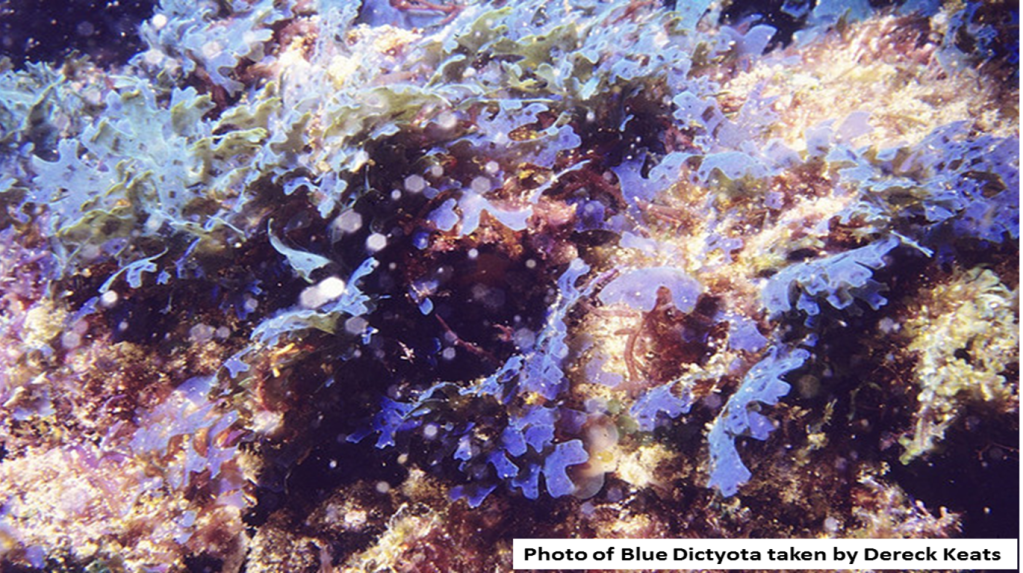
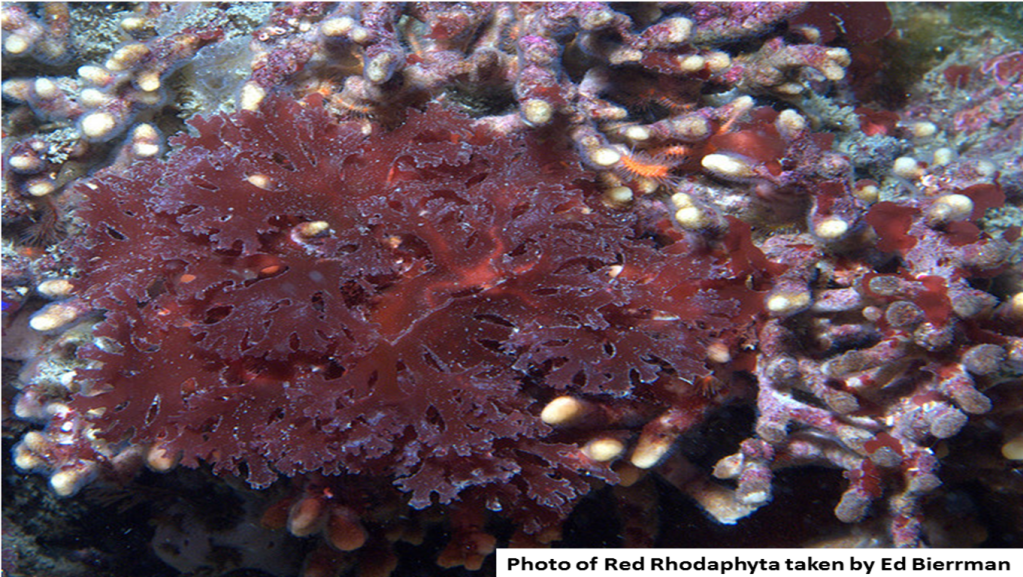
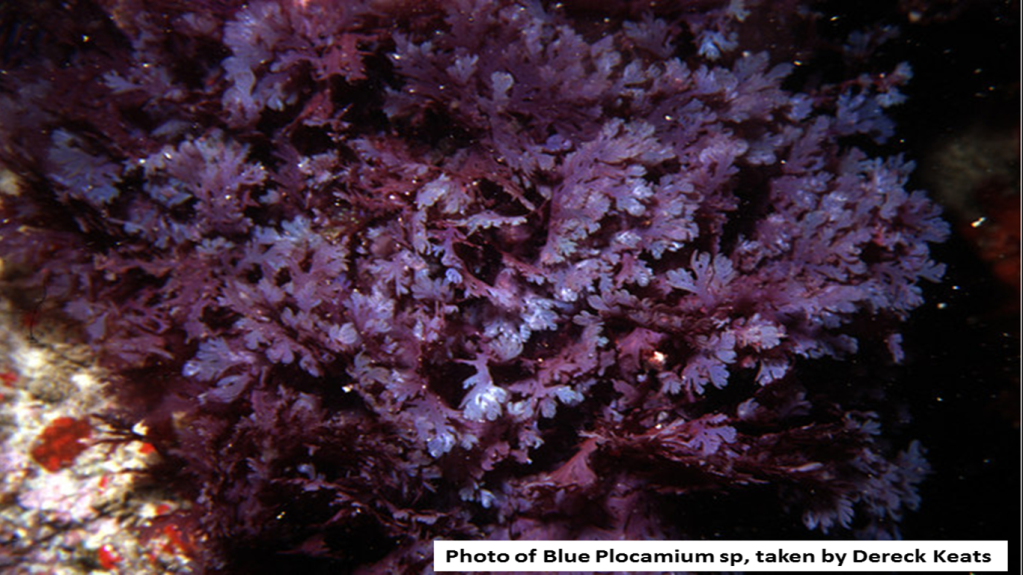
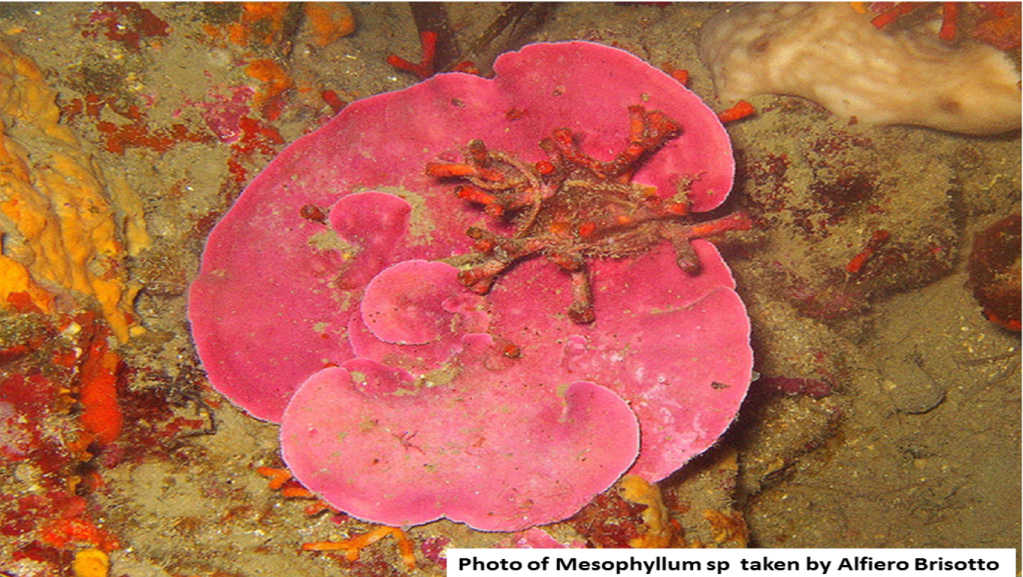
Name: Chaeto (Chaetomorpha Sp. )
Difficulty: Very Easy (likely one of the easiest and most common in the hobby)
Color: Green
Size: Varies, but it can fill up your tank
Lighting: Moderate levels are good
Preferred conditions: Lower to Moderate flow
Special Requirements: Will do best when left floating in your tank. This algae will grow very very fast with high levels of lighting and nutrients. One of the most available algae in the hobby.
Name: Cactus algae ( Halimeda Incrassata)
Difficulty: Moderately difficult
Color: Green
Size: Varies (up to 12 inches)
Lighting: Moderate to higher levels are good
Preferred conditions: Higher flow
Special Requirements: Can be kept as free floating or attached Members of this genus can be good indicators of the balance between your magnesium, alkalinity and calcium levels, all of which will affect the growth rate of this algae. As it has a calcified stock, it will need around 400ppm of Calcium in the water.
Name Shaving Brush, (Penicillus dumetosus),
Difficulty: Easy
Color: Green (can change shades of green depending on the lighting)
Size: The stock gets 5 to 6 inches (1 inch diameter) with the “leafy part getting 2 to 4 inches
Lighting: Moderate levels are good (higher lighting will accelerate growth).
Preferred conditions: Mid to higher flow
Special Requirements: This algae requires 350 to 450 ppm of Calcium as it has a calcified stock. It does best when planted in the substrate. It can grow fast.
Name: Pencil Cap Algae, (Penicillus capitatus),
Difficulty: Easy
Color: Green
Size: total of 3 to 5 inches
Lighting: Moderate levels are good (higher lighting will accelerate growth)
Preferred conditions: Moderate Flow
Special Requirements: Highly calcified and will not be eaten by fish or snails. This algae requires 350 to 450 ppm of Calcium. It does best when planted in the substrate. It will grow fast
Name: Palm Tree Algae (Caulerpa paspaloides)
Difficulty: Easy
Color: Green
Size: total of 3 to 4 inches
Lighting: Moderate levels are good (higher lighting will accelerate growth)
Preferred conditions: Moderate flow
Special Requirements: This algae requires 350 to 450 ppm of Calcium. It does best when planted in the substrate or attached to rocks. Slow growing
Name: Sea lettuce (Ulva lactuca)
Color: Green (usually bright green)
Difficulty: Very Easy
Size: Varies
Lighting: Moderate levels are good (higher lighting will accelerate growth)
Preferred conditions: Moderate flow
Special Requirements: It does best when attached to rocks. Fast-growing algae. Excellent choice for nutrient exporting.
Name: Mermaids Fan (Udotea sp.)
Color: Green
Difficulty: Easy
Size: Varies
Lighting: Moderate levels are good (higher lighting will accelerate growth)
Preferred conditions: Moderate flow
Special Requirements: This algae is highly calcified and will not be eaten by fish or snails. This algae requires 350 to 450 ppm of Calcium. It does best when attached to rocks. Fast growing algae. Excellent choice for nutrient exporting.
Name: Pinecone Algae (Rhipocephalus Phoenix,)
Color: Green
Difficulty: Easy
Size: up to 9 inches
Lighting: Moderate levels are good (higher lighting will accelerate growth)
Preferred conditions: Moderate flow
Special Requirements: This algae is highly calcified and will not be eaten by fish or snails. This algae requires 350 to 450 ppm of Calcium. It does best when attached to rocks. Fast growing algae. Excellent choice for nutrient exporting.
Name: Mermaids Wine Glass (Acetabularia Sp.)
Color: Green
Difficulty: Difficult
Size: Varies, the disk size is 1 inch
Lighting: Moderate to higher levels are required (higher lighting will accelerate growth)
Preferred conditions: Low flow
Special Requirements: This algae has calcified disks and requires 350 to 450 ppm of Calcium. It does best when placed in the substrate.
Name: Killer algae (Caulerpa taxifolia)
Color: Green or light green
Difficulty: Easy
Size: Varies,
Lighting: Moderate to higher levels are required (higher lighting will accelerate growth)
Preferred conditions: Low flow
Special Requirements: It does best when placed in the substrate. Grows very fast, among the most invasive macro algaes (when given the correct conditions).
Name: Blade algae (Caulerpa prolifera)
Color: Green or light green
Difficulty: Very Easy
Size: Varies,
Lighting: Lower to Moderate lighting required (Does best in lower light).
Preferred conditions: Low flow
Special Requirements: It does best when placed in the substrate. An excellent choice for low light set-ups and/or for nutrient removal. Will grow fast.
Name: Red Titan Algae (Titanophora sp.)
Difficulty: Easy
Color: Red / Pink (will be more orange under low lighting levels)
Size: Varies
Lighting: Low to Moderate levels of 6500K
Preferred conditions: Lower to Moderate flow
Special Requirements: It will de best when attached to your rocks. Makes a great display piece
Name: Lamouroux (Laurencia poitei)
Difficulty: Easy
Color: Red, turing a deeper red in lower lighting, can also be brown
Size: 3 inches tall by 6 inches wide
Lighting: Moderate levels of 6500K
Preferred conditions: Moderate to higher flow
Special Requirements: Will do best when attached to some rock
Name: Flame Algae (Bryothamnion sp.)
Difficulty: Easy
Color: Red, Turing a deeper red in lower lighting
Size: Varies
Lighting: Moderate to higher levels of 6500K
Preferred conditions: low to moderate flow
Special Requirements: Will do best when attached to some rock
Name: Red Gracilaria, or Red Branching Gracilaria (Gracilaria sp.)
Difficulty: Easy
Color: Red, Turing a deeper red in lower lighting
Size: Varies
Lighting: Lower to Moderate levels of 6500K
Preferred conditions: Moderate to higher flow
Special Requirements: Will do best when attached to some rock
Name: Fire Fern (bryothamnion triquetrum)
Difficulty: Easy
Color: Red, Turning a deeper red in lower lighting
Size: Varies
Lighting: Lower to Moderate levels of 6500K
Preferred conditions: Lower to Moderate flow
Special Requirements: Will do best when attached to some rock
Name: Pink Galaxy (Galaxaura rugosa)
Difficulty: Easy
Color: Red to Pink (will die in lower lighting levels)
Size: 3 to 4 inches
Lighting: Lower to Moderate levels of 6500K
Preferred conditions: Lower to Moderate flow
Special Requirements: Will do best when attached to some rock
Name: Red Asparagus Algae (Asparagopsis taxiformis)
Difficulty: Very difficult
Color: Red / Pink
Size: Varies
Lighting: Moderate levels are good
Preferred conditions: Moderate flow
Special Requirements: Will do best when the flow is balanced allow it to use the flow in order to remain standing. Attach to rocks
Name: Flamingo Feather Algae, (Heterosiphona gibbesii),
Difficulty: Very difficult
Color: Shades of Brown / Pink / Red
Size: Varies
Lighting: Moderate to higher levels are good
Preferred conditions: Mid to higher flow
Special Requirements: Does best when attached to rocks
Name: Cottoni Seaweeds (Eucheuma Spinosum)
Color: Red. Higher lighting levels will turn it a lighter color (closer to orange or yellow)
Difficulty: Easy
Size: 6 to 8 inches
Lighting: Moderate levels are good
Preferred conditions: Moderate flow
Special Requirements: It does best when attached to rocks.
Name: Red Grape Caulerpa (BOTRYOCLADIA SP)
Color: Red. Higher lighting levels will turn it a lighter shade of red
Difficulty: Easy
Size: 6 to 8 inches
Lighting: Moderate to high levels are good
Preferred conditions: Moderate flow
Special Requirements: It does best when attached to rocks. Note: although this is commonly referred to as red grape kelp, it is not a Caulerpa algae at all.
Name: Baggy Seaweed (Gibsmithia hawaiiensis)
Color: Red
Difficulty: Easy
Size: 1 to 5 inches
Lighting: Low to Moderate levels are good
Preferred conditions: Low to Moderate flow
Special Requirements: It does best when placed in the substrate.
Name: Red Fuzz Cotton Algae (Asparagopsis taxiformis)
Color: Red
Difficulty: Easy
Size: 1 to 3 inches tall
Lighting: Moderate levels are good
Preferred conditions: Low to Moderate flow
Special Requirements: It can be placed in the substrate or on the rocks.
Name: Blue Scroll Macroalgae, Blue Chameleon (codium lucasii)
Color: Metallic blue with green (can also be just green)
Difficulty: Easy
Size: Varies
Lighting: Lower to Moderate levels are good
Preferred conditions: Moderate flow
Special Requirements: It does best when placed in the substrate.
Name: Blue Ochtodes (Ochtodes)
Color: Dark blue to purple
Difficulty: Easy
Size: Varies
Lighting: Moderate to higher levels are good
Preferred conditions: Moderate to higher flow
Special Requirements: It does best when placed in the substrate.
Name: Y-branched Algae (Dictoya Sp. )
Color: Lighter brown (sometimes with a green coloring as well)
Difficulty: Easy to moderate
Size: 12 to 14 inches
Lighting: Lower to Moderate levels are good
Preferred conditions: Moderate flow
Special Requirements: It does best when placed in the substrate.
Name: False Sargassum (Cystoseira Sp.)
Color: Lighter brown
Difficulty: Easy to moderate
Size: 14 to 18 inches
Lighting: Moderate to higher levels are good
Preferred conditions: Moderate to high flow
Special Requirements: It does best when placed in the substrate.
Name: Turbinaria (Turbinaria Sp,)
Color: Lighter brown
Difficulty: Moderate
Size: 18 to 24 inches
Lighting: Moderate to higher levels are good
Preferred conditions: Moderate to high flow
Special Requirements: It does best when placed in the substrate.
Name: Ascophyllum (Ascophyllum sp.)
Color: Lighter brown with shades of yellow
Difficulty: Very easy
Size: It varies, but this is a very tall form of kelp
Lighting: Moderate levels are good
Preferred conditions: Moderate to flow
Special Requirements: It does best when placed in the substrate.
Name: Potato Algae or Scroll Algae, (Padina spp.)
Difficulty: Easy
Color: Brown
Size: varies
Lighting: Higher levels are good
Preferred conditions: Higher flow
Special Requirements: Will do best when the flow is balanced allowing it to use the flow in order to remain standing. Attach to rocks
Name: Japanese Wireweed (Sargassum Muticum)
Difficulty: Easy
Color: Brown
Size: Varies
Lighting: Moderate to higher levels are good
Preferred conditions: Higher flow
Special Requirements: Can be kept as free floating or attached
If you have some macro algae that you want to identify, the below site can be very helpful
http://www.saltcorner.com/AquariumLibrary/browsesection.php
You can also check out the below websites and links to find a lot of pictures of the above discribed algaes:
Reefcleaners.org
Reefkeeping.com
worldwidereefers.com
http://www.reefcorner.com/macroalgae.htm
http://www.saltwater-aquarium-guide.com/Macroalgae.htm#
Please feel free to start a thread in the forum to ask any questions you may have. If you are not already a member, you will need to sign-up first.
http://www.aquaticcommunity.com/aquariumforum/forumdisplay.php?f=62
Nice article Cliff. Are all of these tropical? I would be curious to know about temp requirements. The Sargassum muticum – Japanese Wireweed looks a lot like a seaweed I used to see on the beach in Nova Scotia.
The reds and blues are tropical. Some of the green ones can be found further north and have adapted to cooler waters (the more invasive species that is). The brown ones can also be found in both, but seam to do better in cooler waters. It can be amazing how some macro algae can adapt to very vastly different environments. Make it a little difficult to figure out which ones will thrive in a tank and which may just do OK.
What a joy to find such clear thinking. Thanks for potisng!
Thanks for the overview. I think you I am going to be forced to setup an algae tank now. Allways thought they look more interesting than reef tanks and from this it seems they are easier to care for as well.
This would be most awesome if you had a picture of each species!!!!
We are working on adding a section to detail some of the different species. Over the next few weeks you should start to see the first few profiles
You can now find profiles of individual algae species by going to our
macro algae profiles page
We will be adding more species as often as we can.
If you could have pictures, along with the scientific and common names that would be a great. Paleontologists like me who often extract similar looking algal forms from well cutting samples and core and have nothing to use for comparative purposes. Your web site would be an awesome treasure of information for people like me. Thanks for your fine work.
Karl
Cliff, I’m interested in farming macroalge for commercial purposes in a closed system. Do you know if this is being done ? Thanks
I have read articles on line about companys doing this to sell into the aquarium hobby industry. That is the only thing that comes to mind for me.